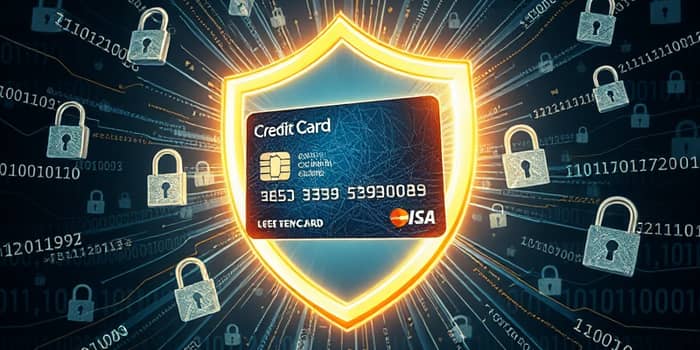In an era where data breaches and hacks dominate headlines, credit cards remain both indispensable and vulnerable. Millions rely on plastic and digital wallets for daily purchases, yet many underestimate the sophisticated tactics that fraudsters employ. This comprehensive guide reveals the most common pitfalls, backed by eye-opening statistics, and equips you with actionable strategies to fortify your financial life against evolving threats.
Understanding the Threat Landscape
Credit card fraud is the fastest-growing form of identity theft, with losses skyrocketing to over $12.5 billion in 2024. Each compromised card can haunt victims for years, resulting in lost funds, damaged credit, and emotional distress. A staggering 80% of cards already compromised highlights just how pervasive these risks can be.
While card-not-present transactions account for 65% of all losses, thieves also deploy skimmers, phishing schemes, and social engineering. Without a robust defense, even the most vigilant consumer may fall prey to a single lapse in security.
Common User Mistakes and Unsafe Habits
Unsafe habits among cardholders remain a primary driver of fraud. Surveys indicate that 84% admit to at least one risky practice, while 59% juggle multiple unsafe behaviors simultaneously.
- Using the same credit card for all expenses, including everyday transactions and subscriptions.
- Reusing passwords across multiple online accounts, magnifying vulnerability.
- Storing card information in browsers or merchant websites for convenience.
- Completing payments over public Wi-Fi networks without protection.
- Relying on free VPN services that may lack proper encryption.
Main Types of Card Security Risks
Diverse fraud schemes target both physical and digital channels. Recognizing these threats is the first step toward prevention.
- Card-Not-Present (CNP) Fraud: Online, phone, or mail order transactions.
- POS Skimming: Physical theft via compromised card readers.
- Imposter and Chargeback Fraud: Fake identities leading to unauthorized refunds.
- Outdated System Software: Unpatched vulnerabilities exploited by hackers.
Business Best Practices
While individuals must stay vigilant, businesses carry the equal responsibility of safeguarding customer data. Implementing a data security plan with regular audits can drastically reduce breach risk. Companies should limit access to sensitive records and encrypt data at rest and in transit using industry-standard protocols like TLS.
Web applications must be shielded with defenses against injection and other common attacks. Staff training is equally crucial; employee awareness and proper storage practices form the frontline defense against human error.
Empowering Consumers with Practical Tips
Beyond general awareness, specific actions can transform your security posture. Developing smart habits today prevents fraud tomorrow.
- Use digital wallets like Apple Pay or Android Pay with encrypted tokens and authentication features.
- Maintain separate cards for recurring bills and discretionary spending.
- Enable real-time alerts to regularly check account statements and catch unauthorized charges immediately.
- Install reputable antivirus software and avoid clicking suspicious links or attachments.
- Conduct routine software updates on devices to patch vulnerabilities.
Demographic Insights and Impact
Fraud affects all age groups, but the impact varies. Millennials report the highest incidence of unauthorized transactions, while seniors often endure larger per-incident losses. Nearly half of young adults who identify fraud still lose money, underscoring the need for comprehensive safeguards.
Understanding your unique risk profile—whether you shop online frequently or rely on ATMs—allows you to tailor protective measures to your lifestyle, ensuring lasting peace of mind and financial stability.
Conclusion: Building a Secure Financial Journey
In today’s digital economy, proactive vigilance is the ultimate defense against fraud. By recognizing common mistakes, understanding threat types, and implementing both individual and organizational best practices, you can create a formidable security net around your finances.
Embrace these strategies to foster building a culture of vigilance, safeguard your personal data, and navigate the modern payment landscape with confidence.
References
- https://merchantcostconsulting.com/lower-credit-card-processing-fees/credit-card-fraud-statistics/
- https://www.security.org/digital-safety/credit-card-fraud-report/
- https://www.barharbor.bank/resources/financial-education/top-5-security-risks-in-credit-card-payments--and-how-to-conquer-them-
- https://www.ussc.gov/research/quick-facts/credit-card-and-other-financial-instrument-fraud
- https://www.johnmarshallbank.com/resources/security-center/fraud-facts-and-statistics/
- https://www.statista.com/statistics/958997/fraud-loss-usa-by-payment-method/
- https://www.ftc.gov/business-guidance/resources/protecting-personal-information-guide-business
- https://use.expensify.com/blog/credit-card-statistics










